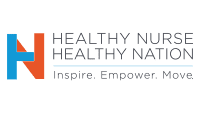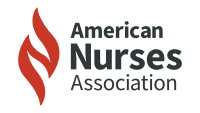RNs are vulnerable during COVID-19.
The stress of a pandemic can put nurses at higher risk of becoming targets of workplace violence. Now more than ever, the American Nurses Association (ANA) emphasizes its long-standing position of zero tolerance for incivility, bullying, and workplace violence. ANA’s position statement provides guidance for nurses and their employers about how to create a culture of safety, prevent all forms of violence—from eye-rolling and nonverbal actions to verbal and physical abuse—and support staff affected by abuse and violence. Several ANA initiatives are underway to address the issue.
ANA’s #EndNurseAbuse Initiative recognizes that one in four nurses are assaulted, but 20% to 60% of incidents are unreported. This must stop. Nurses can access educational materials supporting their commitment to a safe work environment at endnurseabuse.org. A pocket-size brochure, flyers, toolkits, policy briefs, and template letters to legislators provide nurses with tools to report abuse and change their work environment.
NQP supporting safe workplaces
In June, ANA participated in an Action Team to Prevent Healthcare Workplace Violence sponsored by the National Quality Partners™ (NQP). This interprofessional taskforce identified four key strategies that healthcare organizations, community stakeholders, and other leaders in healthcare can address. The strategies include developing and standardizing definitions of workplace violence and creating a national repository for efficient data collection; sharing data and investing in research tools to effectively analyze it; supporting policies and legislation that invest in safety across practice settings; and collaborating with community partners and advocacy groups to identify opportunities for partnership. A culture of safety must be promoted to strengthen and support a safe work environment. Read the report here.
Policy change
Collaborative approaches can help prevent nurse abuse, but many healthcare employers haven’t developed suitable plans to prevent workplace violence. That’s why ANA is leading the charge in Washington, DC, to end nurse abuse, raising awareness with policymakers, and pushing for legislative and regulatory solutions.
In 2019, the U.S. House of Representatives passed the Workplace Violence Prevention for Health Care and Social Service Workers Act (H.R. 1309). A similar bill, S. 851, has been introduced in the Senate. Proposed legislation would require the Occupational Safety and Health Administration to develop enforceable workplace safety standards to address nurse abuse. For example, healthcare and social service employers would be required to write and implement a workplace violence prevention plan to protect employees from violent incidents in the workplace. To take action, visit nursesvote.org/issue/workplace-violence.
Leading by example—A nurse’s story
An ANA member was verbally abused by her preceptor. She knew these actions were inappropriate, but accepted the abuse out of fear that she wouldn’t pass her clinical rotation. This nurse excelled and eventually became a preceptor herself. However, she treated student nurses in the same brash way that her preceptor treated her—until she met Katie. Katie pulled her aside and bravely pointed out the nurse’s specific inappropriate behaviors. Katie changed the nurse’s life, and she now shares her story with nurse residents to help them in their journey.
Ruth Francis, MPH, MCHES, is senior policy advisor in Nursing Practice & Work Environment at ANA.
References
The Joint Commission. Workplace violence in the post COVID-19 era. June 5, 2020. jointcommission.org/resources/news-and-multimedia/blogs/dateline-tjc/2020/06/05/workplace-violence-in-the-post-covid-era
World Health Organization. Violence against health workers. who.int/violence_injury_prevention/violence/workplace/en



















1 Comment.
Workplace incivility and bullying will continue to permeate healthcare unless we all learn to crucially and respectfully confront these behaviors between each other. However, I am gravely concerned about the abusive behavior of hospitals towards nurses who just want safe working conditions for themselves and their family members during this pandemic. I hear and read stories of “power over” rather than shared collaboration with this pandemic and I continue to see Boards of Nursing used to punish nurses for speaking out on their safety concerns. This corporate behavior continues to oppress the nursing profession and must stop. The healthcare industry must learn to keep employees safe first. In that, patient safety also will flow to a high priority.